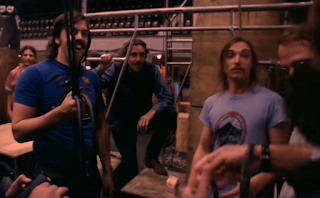STRIKE
The following statement was drafted over the weekend in New York by an emergency meeting of college and university newspaper editors. Editors from the following colleges and universities approved this statement: Brown, Cornell, Columbia, Dartmouth, Harvard, University of Pennsylvania, Princeton, Haverford, Bryn Mawr, Sarah Lawrence, and Rutgers.
President Nixon's unwarranted and illegitimate decision to send American combat forces into Cambodia and to resume the bombing of North Vietnam demands militant, immediate, and continued opposition from all Americans.
Through his unilateral executive move, the President has placed our country in a state of emergency. He has ignored the constitutional prerogatives of Congress, and has revealed the sham of his policy of Vietnamization, a policy which, through a torturous process of inner logic, demands that we escalate the war in order to enable American troops to withdraw. He has demonstrated that American foreign policy still dictates the necessity to sacrifice American lives, to ravish independent countries, and to squander our energies and resources.
The President has tragically misgauged the mood of the country. The anti-war movement, which has marched and protested for years in a vain effort to reverse the United States role in Southeast Asia, has finally resurfaced in new and larger numbers. With Nixon's lies now finally exposed, the immorality and hypocrisy of our government's actions have been revealed for all to see.
The need for action has never been so great and so urgent. We therefore call on the entire academic community of the country to engage in a nationwide strike. We must cease business as usual in order to allow universities to lead and join in a collective strike to protest American's escalation of the war.
We do not call for a strike by students against the university, but a strike by the entire university - faculty, students, staff and administration alike.
The reasons for such a strike are manifold. First, it is a dramatic symbol of our opposition to a corrupt and immoral war. It demonstrates clearly our priorities, for the significance of classes and examinations pale before the great problem outside the classroom. Moreover, it recognizes the fact that, within a society so permeated with inequality, immorality, and destruction, a classroom education becomes a hollow, meaningless experience.
But the necessity for a strike extends even far beyond these reasons. The strike is necessary to free the academic community from activities of secondary importance and to open it up to the primary task of building renewed opposition to the war. It is necessary to permit the academic community to solidify its own opposition beyond the campuses.
We ask the entire academic community to use this opportunity to go to the people, and to bring home to the entire nation the meaning of the President's action. A massive, unprecedented display of dissent is required.
We urge that this strike be directed toward bringing about the following changes:
1.) Passage of an amendment to the Senate's Military Appropriations Bill to deny all aid for our military and political adventures in Southeast Asia.
2.) The mobilization of public support for anti-war candidates in the upcoming primary and general elections.
3.) The end of political repression at home, in particular the government's systematic attempt to eliminate the Black Panther Party and other political dissidents.
4.) A reallocation of American resources from military involvement abroad to domestic problems, in particular the problems of our beleaguered cities.
5.) And the building of support for a massive demonstration in Washington on May 9 to bring to the nation's capital, an unprecedented number our position. [sic]
The stage has been set, the issues clearly drawn, the need apparent. It is now time to act. [...]
We must be one in this struggle or else our energies will be frustrated.
* * *
UNIVERSITY-WIDE REFERENDUM STRIKE WEDNESDAY
by Jay Rubin
A university wide referendum will take place all day today to decide whether or not the State University of New York at Binghamton will join a nationwide strike of universities. The strike was called for at an emergency meeting of college newspaper editors to protest the latest United States escalation of the war in Indochina. Balloting will take place in dorm lounges and the Student Center until 10 p.m.
The strike, if approved, will be an open end strike with the newly formed SUNY-Binghamton Action Committee attempting to work out an agreement that would cancel all finals. In place of classes, specific strike activities will be planned.
A demonstration in Binghamton, hopefully involving the entire community, is set for Saturday. In addition, petitions will be circulated calling for the impeachment of Nixon and Agnew. The Action Committee will become the Strike Committee and attempt to set up a liberation school on campus . . .
The decision to hold the referendum and appoint an Action Committee was made at a mass meeting last night in the Women's Gym. The 1800-person, two and one-half hour meeting heard 16 proposals before deciding on specific plans. The meeting was hectic and marked by shouting. Proposals ranged from going to a demonstration in Washington, to tying up the power structure by making ten phone calls a day per person to war corporations. [...]
Numerous actions have begun on college campuses across the nation. Stony Brook and Albany have begun their strikes today. Other SUNY colleges are expected to follow.
(from the Colonial News, State University of New York at Binghamton, May 5, 1970)




































































